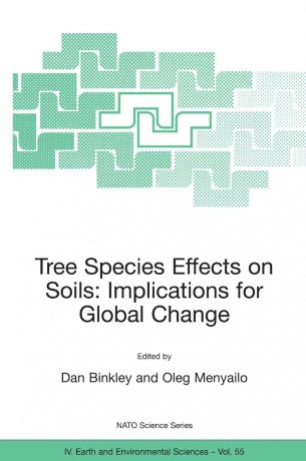
Tree Species Effects on Soils: Implications for Global Change
Publication year: 2005
ISBN: 978-1-4020-3447-3
Internet Resource: Please Login to download book
Almost 50% of the total area of Austria is forested, and the forests are dominated by commercially valuable stands of Norway spruce ( (Picea abies). The few remaining forests that resemble the natural vegetation composition are located in forest reserves with restricted management. These natural forests are used as reference systems for evaluating silvicultural research on sustainable forest management. Natural forests are expected to have high biodiversity, where the structural richness of the habitat enables complex relationships between fauna, flora, and microflora. They also provide refugia for rare plants and animals found only in natural forest types. Austria had 180 of these forest reserves up to the year 2003. Most of these forests are privately owned, and owners are compensated by the government for loss of income associated with conservation status. The Ministerial Conference for the Protection of Forest Ecosystems (MCPFE) has launched a world-wide network of protected forest areas which should cover all major forest types (MCPFE and UNECE/FAO, 2003). The sites selected for our investigation of soil conditions and communities were chosen by vegetation ecologists and soil scientists. The stands have developed under natural competition conditions with no management interventions. Our set of sites spans gradients of environmental conditions as well as species composition, providing a realistic evaluation of the interactions of biotic and abiotic factors.
Subject: Biomedical and Life Sciences, Oxide, biodiversity, biogeochemical cycles, biology, ecosystem, forest, soil, sustainability